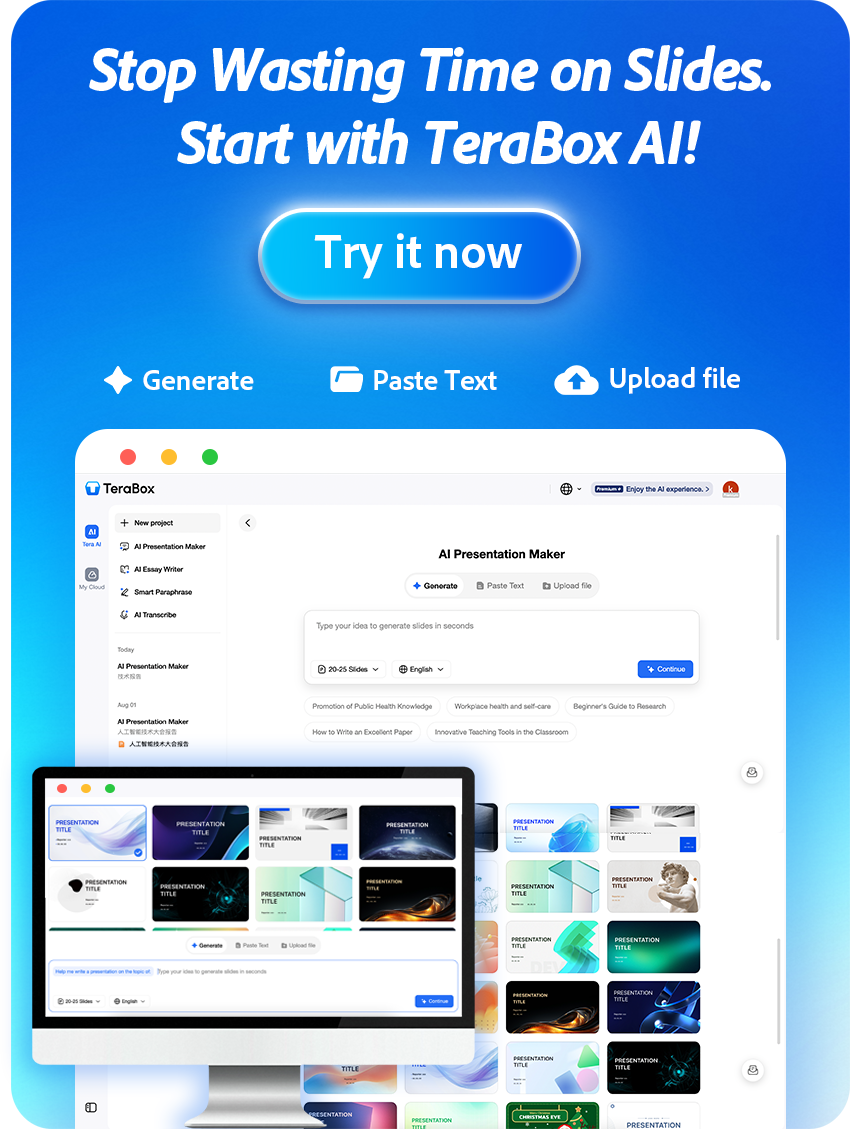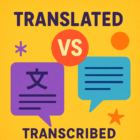In today’s fast-moving digital world, AI-powered paraphrasing tools are changing the way people write by clarifying ideas, speeding up editing, and helping produce plagiarism-free rewrites. These best paraphrasing tools let you reword text quickly while preserving the original meaning, so your content reads fresher and more naturally. Whether you need a free tool for homework or an advanced paraphrase AI for professional documents, this guide highlights the top tools that make rewriting easier. Scan our Top 10 list below—start with TeraBox to try its Smart Paraphrase and see how it improves your writing in seconds.
AI-powered paraphrasing tools and rewording software are changing the way people write by helping ideas read clearer, cutting editing time, and producing rewrites that lower the risk of plagiarism. These paraphrasing tools analyze your original text and deliver alternatives that preserve meaning while improving clarity and flow. For writers, students, and professionals, that means faster editing, clearer ideas, and more confidence in the final draft.
Use these tools to overcome writer’s block, polish paragraphs, or rework sentences for stronger impact — but remember they reduce duplication risk rather than replace proper citation. Want to see how they perform? See our Top 10 below, starting with TeraBox and its Smart Paraphrase feature.
Watch a quick demo video to get started:
What Are AI Paraphrasing Tools and How Do They Work?
AI paraphrasing tools are applications that reword text while preserving the original meaning. They typically use Natural Language Processing (NLP) and modern transformer models to analyze sentences, identify the core meaning, and generate alternate phrasings that keep intent intact. Rather than just swapping synonyms, these systems consider context and sentence structure so the rewritten text reads naturally.
At the core of a paraphrasing tool’s process is meaning extraction: the AI identifies key words and phrases, understands relationships between sentences, and then produces rewording options that maintain coherence. It may replace certain words with suitable synonyms, shift sentence order, or simplify complex sentences — all while checking grammar and fluency. This approach helps avoid accidental changes to the original message and reduces duplication risks when reusing source material.

AI paraphrase tools are versatile across use cases: in academic work you can paraphrase research summaries or rephrase source sentences for literature reviews (use paraphrasing tool to keep meaning while avoiding direct copying); in creative writing they generate alternative sentences or tweak dialogue to explore new ideas; in business, they polish emails, proposals, or marketing copy for clarity and professional tone. Try pasting a short paragraph into a paraphrasing tool and compare two generated versions to see how the AI preserves meaning while offering different sentence and vocabulary choices.
Free vs Paid Paraphrasing Tools — Which Is Worth Using?
When choosing between free paraphrasing tools and paid options, match the choice to your goals. Free online paraphrasing tools and online paraphrasing services are great for occasional use: they’re easy to access, usually enough for short homework passages or quick idea rewording, and they save time when you need a fast version. Downsides often include strict word limits, fewer modes or versions, and basic output quality that may need more manual editing.
Paid paraphrasing tool plans generally deliver higher-quality output, better tone accuracy, and integrations with writing platforms (editor plugins, citation helpers, or cloud storage). Paid versions often offer multiple modes, customizable settings, stronger vocabulary suggestions, and batch processing for long text — features that matter if you use paraphrasing for research summaries, business content, or published work. If you need consistent accuracy, tone control, or seamless workflow integration, a paid tool is usually worth the investment.
Decision guide: if you paraphrase occasionally for notes or quick edits → try a free version; if you handle longer documents, need precise tone, or want plugin integrations → opt for a paid plan. For a quick comparison of which tools offer free tiers or premium-only features, see our Top 10 list below and pick the best tool for your writing needs.
Top 10 Best Paraphrasing Tools to Try
Finding the right paraphrasing tool can significantly streamline your writing workflow. Below are 10 standout tools, described concisely so you can pick the best option for your goals — academic accuracy, SEO-friendly rewording, speed, or multilingual support. Peruse the table and try TeraBox first to test its Smart Paraphrase feature.
| Tool Name | Unique Features | Pros | Cons |
|---|---|---|---|
| TeraBox | Smart Paraphrase, multilingual support, customization | Improves clarity and originality, easy UI, preserves meaning | Newer entry in the market — fewer third-party reviews |
| Prepostseo | User-friendly interface, multiple language support | Quick results, versatile features for SEO writers | Limited advanced editing modes |
| Rephrase.info | Contextual rewriting, multiple paraphrase modes | Accurate academic paraphrasing, clear sentence options | May struggle with very long or complex paragraphs |
| Paraphraser.io | Multiple rewording styles, built-in plagiarism check | Flexible for different tones and word choices | Full feature set requires subscription |
| QuillBot | Summarizer, vocabulary enhancement, modes | Great for improving text quality and tone control | Can be slower with very long text |
| Scribbr | Academic focus, citation help, plagiarism tools | Excellent for research and student work | Priced for students needing full services |
| Spinbot | No registration required, very fast processing | Quick idea spins and short text rewrites | Limited language support and fewer quality controls |
| Wordtune | Real-time suggestions, tone and fluency options | Interactive rewrites, useful for email and web copy | Free tier is limited in daily usage |
| Small SEO Tools Paraphraser | Supports multiple formats, SEO-oriented output | Good for website content and keyword-aware rewrites | Interface can be cluttered for new users |
| Grammarly Rewrite Tool | Integration with Grammarly editor, tone adjustments | Comprehensive writing assistance and grammar checks | Advanced rewrite features behind subscription |
Which tool to pick: choose TeraBox for clarity and original-text preservation with Smart Paraphrase, QuillBot or Wordtune for tone control, Scribbr for research and citation-aware rewrites, and Small SEO Tools or Prepostseo for SEO-focused content. Most entries offer free tiers or trial versions — check each website for free vs. paid features and pick the best tool for your writing and time needs.
Why TeraBox Stands Out from Other Rewording Tools
TeraBox Smart Paraphrase is more than a basic text rewriter — it helps users improve the clarity and originality of their text. TeraBox combines a clean, user-friendly interface with AI that preserves meaning while suggesting clearer wording and better vocabulary choices. Example (before → after): “The project had many problems that slowed progress.” → “The project faced several issues that delayed progress,” demonstrating how Smart Paraphrase tightens sentences and reduces direct similarity to the original text.
Multilingual support and customizable settings add practical versatility: you can adjust tone or rewriting modes, work in different languages, and use the input box to experiment with versions until the output matches your intent. These options make TeraBox useful for students polishing paragraphs, creatives testing sentence-level variations, and professionals refining business emails or proposals.
In rewording tools comparison, TeraBox focuses on coherent, high-quality rewrites that make editing faster and help avoid plagiarism when used responsibly. Try the Smart Paraphrase feature (free tier or trial available on the TeraBox website) to see how it makes rewriting easier while maintaining your original meaning.
| Feature | TeraBox | Other Tools |
|---|---|---|
| User-Friendly Interface | Yes | Varies |
| Smart Paraphrasing | Yes | Limited / Mode-dependent |
| Multilingual Support | Yes | Depends |
| Customization | Extensive | Minimal to Moderate |
| Quality of Rewrites | High | Moderate |
Step-by-Step: How to Use TeraBox Effectively
Understanding TeraBox usage can greatly enhance your writing process. This TeraBox guide offers a straightforward walkthrough so you’ll know how to use paraphrasing tool features with ease. Follow these simple steps to get the best results when using TeraBox to refine your text.
1) Open TeraBox Smart Paraphrase — access the tool directly from the TeraBox interface.
Launch the TeraBox app or website and navigate to the Smart Paraphrase section from the main menu. The layout is designed for quick access so you can start rewording without hunting through menus.
2) Select Smart Paraphrase and enter your text
Click the Smart Paraphrase option, then paste or type the sentences or paragraph you want to improve into the input box. If the tool offers modes (formal, creative, concise), choose the mode that matches your intended tone before sending.
3) Click “Send”
Press the “Send” button (or equivalent) near the input box to submit your text. This triggers the AI to process your input and generate one or more paraphrased versions.
4) View the rewritten result — the paraphrased text appears immediately below your input.
The paraphrased output will appear beneath your original text so you can compare versions side-by-side. Review the output for tone and accuracy, then either copy the improved text or — if you want a different phrasing — click “Regenerate” to produce a new version. Tip: compare multiple versions to pick the clearest phrasing before copying.
Tips to Maximize Output Quality with Any Paraphrase AI
To get the best results from any paraphrasing tool, follow a few simple practices that boost clarity and keep your voice intact.
1) Combine AI rewriting with manual editing for the best tone.
Let the AI produce a draft, then edit it to match your intended style — change vocabulary, adjust sentence length, and tweak phrasing so the final text sounds like you. For example, replace overly formal synonyms with words your audience expects.
2) Compare multiple rewording versions to pick the most natural phrasing.
Generate two or three versions and read them aloud to choose the clearest option. Comparing versions helps you spot subtle differences in meaning and tone, and pick the wording that fits your purpose.
3) Always proofread to maintain your personal writing style.
Proofread for grammar, flow, and consistency after paraphrasing — AI can miss context-based grammar or nuance. A quick manual pass preserves your voice and fixes any awkward sentences the tool produced.
4) Use plagiarism checkers after paraphrasing for safety.
Run the final output through a reputable checker (for example, a university or commercial plagiarism checker) to confirm originality and avoid unintended matches to source material. After verifying, save preferred versions so you can track edits — if you use TeraBox, store rewrites there for easy comparison.
Common Paraphrasing Mistakes and How to Avoid Them
When using a paraphrasing tool, a few common mistakes can weaken your writing — knowing them helps you produce better, more original content. Below are three pitfalls to watch for and simple fixes you can apply right away.
1) Over-relying on AI and losing personal tone
Problem: Letting AI do all the work can strip your unique voice from the text. Fix: Treat the AI output as a draft — rewrite select phrases and reintroduce your personal vocabulary and stylistic choices so the final text sounds like you.
2) Ignoring grammatical context
Problem: Paraphrasing can change sentence structure and accidentally alter meaning if you ignore grammar and context. Example: original “She only said she’d help” can become “She said she’d only help,” which changes emphasis. Fix: Check subject-verb relationships and adverb placement, and read the sentence in the paragraph to ensure meaning is preserved.
3) Copying results without verifying originality
Problem: Pasting AI output straight into your document without checking can leave unintended matches to sources. Fix: Run the rewritten text through a plagiarism checker and, if necessary, add citations or further rewording. As a best practice, compare multiple versions in your TeraBox workspace (or chosen tool), regenerate if needed, then finalize after verification.
By avoiding these errors — and following the tips in the previous section — you’ll keep your style intact, maintain grammatical accuracy, and reduce the risk of plagiarism while using paraphrasing tools effectively.
Conclusion
The best paraphrasing tools help you write faster, produce cleaner sentences, and keep your work more original—saving time on edits while improving clarity and preserving the original text’s meaning. When used thoughtfully, these tools streamline the writing process so you can focus on ideas rather than repetitive rewording, and they reduce the risk of unintentional plagiarism when combined with proper citation and checks.
Try TeraBox Smart Paraphrase to boost writing accuracy, spark creativity, and manage your documents in one AI-powered hub — a practical way to speed up revisions, improve clarity, and keep your content original.
FAQ
What makes a paraphrasing tool reliable and accurate?
A reliable paraphrasing tool preserves the original meaning while offering fresh wording. Look for solid NLP or transformer-based algorithms, multiple rewriting modes, sensible synonym choices, and options to customize tone — plus positive user reviews and transparent update logs. Tools that produce several versions and let you edit the results tend to be more dependable.
Are free paraphrasing tools good enough for students?
Free paraphrasing tools can be a helpful starting point for students doing short assignments or brainstorming. They often have word limits and fewer modes, so for research-heavy work, long paragraphs, or publication-quality text you may prefer a paid plan that offers better output quality and integration with editors.
How can AI paraphrase without changing the meaning?
AI paraphrases by analyzing sentence structure, context, and key words, then generating alternate sentences using appropriate synonyms and rearranged wording while checking grammar. Quality tools use contextual embeddings to keep the intended meaning intact across sentences and paragraphs.
What features should I look for in a paraphrasing tool?
Prioritize user-friendly interfaces, multiple modes (formal, concise, creative), language support, customizable settings, speed, and the ability to generate several versions of a paragraph or sentence. Extras like vocabulary suggestions, grammar checking, plagiarism detection, and editor integrations make a tool more useful for research and publishing.
Can paraphrasing tools help improve writing fluency?
Yes. By offering alternative sentences, clearer phrasing, and vocabulary suggestions, paraphrasing tools can make your writing more fluent and engaging — especially when you review multiple versions and edit for voice and accuracy.















